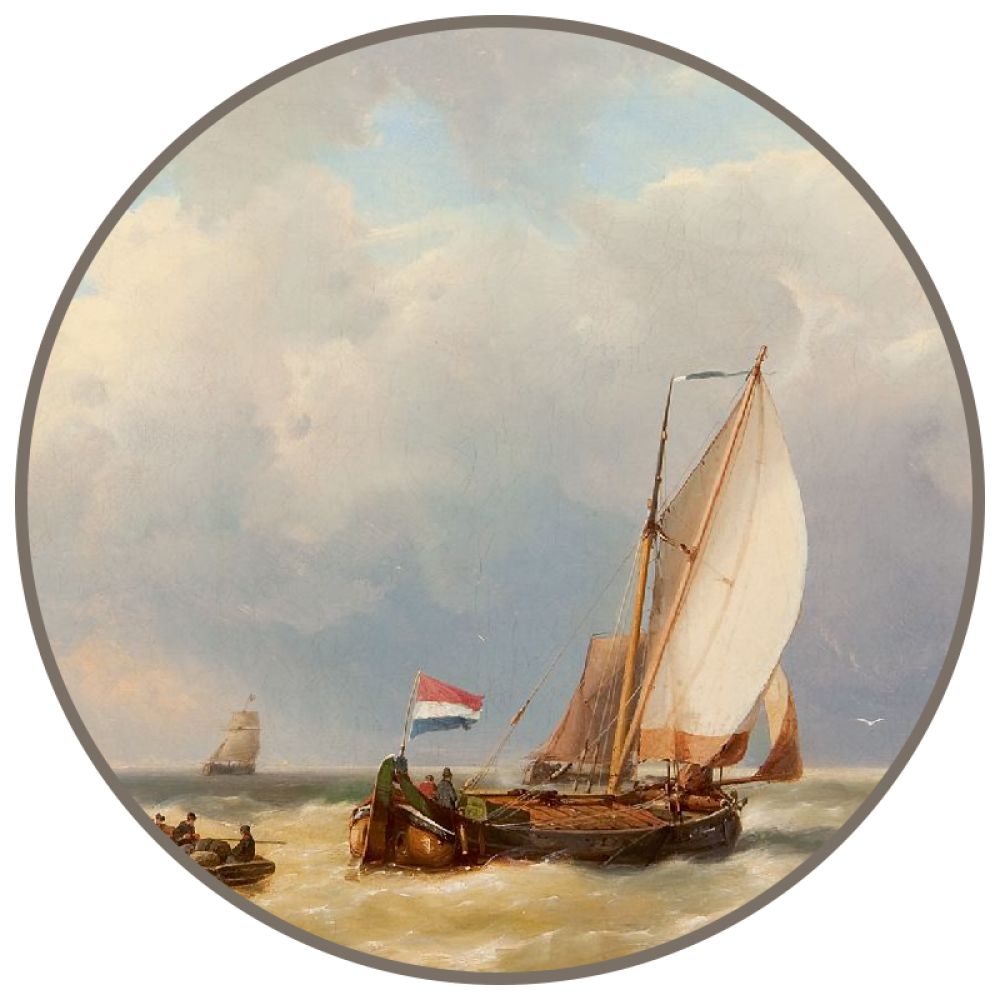Kleine Jager
 Painting 'Stern-barge' J.H.B. Koekkoek 1840-1912
The 'Kleine Jager' is one of the last (two) remaining stern-barges in the Netherlands, recognizable by the striking finish of the stern with ascending plating. The ‘Kleine Jager’ has a number of reference in the standard work 'Met zeil en treil' (about the barge as part of the Netherlands' historical sailing heritage).
Barges (in Dutch: 'Tjalken')
The barge was one of the most important sailing cargo ships on Dutch waters from the seventeenth century to the mid-twentieth century. The main features are:
- The round falling prow that usually had a windbiter
- The straight upright stern
- The buoy that falls strongly inward at the fore and aft
- The plump bow
- The straight sides
- The wide flat bottom
- The round bilge
- The large fan-shaped lee boards
- The mast that could be lowered
Until the second half of the nineteenth century, barges were made from wood. Then they were built in iron, and later steel. Until well into the twentieth century, various types of barges were used on inland waterways and at sea. One of the remarkable shapes of the barges was the stern-barge, whereby this specific ship, the 'Kleine Jager', is also a deck-barge, that is to say a barge without a deckhouse and with a deck that continues at one height. The designation 'stern-barge' meant that the barge has a stern or state, which is an extra buoy on the stern with an opening (in Dutch: 'hennegat') for the tiller. The use of this stern-barge as a sailing passenger ship makes it possible to preserve this special piece of cultural heritage for future generations.
Resumé
- 1892 the ship is called 'Twee Gebroeders'
- 1930 the ship was sold to Belgium and given the name ‘L’Arche de Noë’
- 2007 the ship was given the name ‘De Arend’
- 2020 the ship was renamed to 'Kleine Jager'
| 